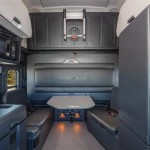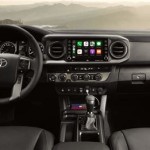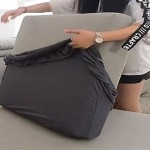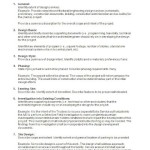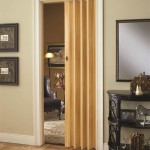Interior Design Mood Board Examples: Visualizing Your Dream Space
Mood boards are essential tools for interior designers and homeowners alike. They serve as visual representations of a design concept, bringing together a cohesive collection of colors, textures, patterns, materials, and furniture styles. By creating a mood board, designers can communicate their vision to clients, explore different possibilities, and ensure a harmonious flow throughout the space. This article will delve into the world of mood boards, exploring their purpose, key components, and providing diverse examples to inspire your next design project.
The Purpose of a Mood Board: More Than Just Pretty Pictures
A mood board is not simply a collection of aesthetically pleasing images. It's a strategic tool that serves several crucial purposes:
- Communication: Mood boards act as a tangible visual representation of the designer's vision, facilitating clear communication with the client. They help bridge the gap between abstract ideas and concrete visual elements, ensuring both parties are on the same page.
- Inspiration: Mood boards inspire creativity, sparking new ideas and design directions. By assembling a diverse range of visual elements, designers can uncover unexpected connections and explore uncharted territories.
- Concept Exploration: Mood boards allow designers to experiment with different color palettes, textures, and styles without committing to any specific materials or finishes. They provide a safe space for exploration and refinement before actual construction begins.
- Coordination: By bringing together various components like fabrics, paint samples, and furniture swatches, mood boards help ensure a cohesive and harmonious aesthetic throughout the entire space.
Key Components of a Successful Mood Board: Building a Visual Narrative
A well-crafted mood board should incorporate a variety of visual elements that contribute to a cohesive and inspiring narrative. Here are some essential components:
- Color Palette: Choose a dominant color and accent colors that create a desired mood and reflect the overall style. Consider using color swatches, paint chips, or fabric samples to represent the chosen palette.
- Textures and Patterns: Include samples of fabrics, wallpapers, wood finishes, or other materials that represent the desired textures and patterns. This adds depth and tactile interest to the mood board.
- Furniture Styles: Showcase the overall furniture style by incorporating images or sketches of furniture pieces that align with the chosen aesthetic. This could include chairs, sofas, tables, beds, or even lighting fixtures.
- Inspirational Images: Include photographs or artwork that represent the desired atmosphere and inspire the design concept. This could be anything from nature scenes to architectural details or even abstract paintings.
- Materials: Incorporate actual samples of materials like tile, stone, or flooring to provide a tangible experience of the chosen elements.
- Textual Elements: Add captions or written notes to explain the rationale behind certain choices or highlight key features of the design concept.
Mood Board Examples: A Glimpse into Diverse Styles
The possibilities for mood board creation are limitless, reflecting the diverse range of interior design styles. Here are a few examples to inspire your own design projects:
1. Modern Minimalist Mood Board
A modern minimalist mood board might feature a clean, uncluttered aesthetic with a neutral color palette of whites, grays, and blacks. Include sleek, geometric furniture silhouettes, natural materials like wood and stone, and simple, contemporary artwork. The overall effect should be one of simplicity and functionality.
2. Boho Chic Mood Board
A boho chic mood board embraces a more eclectic and free-spirited style. Use earthy tones, vibrant accents, and natural textures like woven rugs, macrame, and leather. Incorporate vintage furniture pieces, patterned textiles, and eclectic artwork that reflects a global influence.
3. Rustic Farmhouse Mood Board
A rustic farmhouse mood board exudes warmth and coziness. Feature warm wood tones, distressed furniture, and natural materials like linen and cotton. Include elements like reclaimed wood, exposed beams, and antique accents to enhance the rustic charm. Use a color palette of creams, browns, and greens to complement the farmhouse aesthetic.
4. Contemporary Industrial Mood Board
A contemporary industrial mood board blends modern elements with industrial accents. Use a palette of grays, blacks, and metallics. Incorporate exposed brick, metal pipes, and vintage lighting fixtures. Include sleek furniture with clean lines and a touch of industrial edge.
5. Tropical Oasis Mood Board
A tropical oasis mood board evokes a sense of relaxation and escapism. Use vibrant colors like turquoise, coral, and yellow. Embrace natural textures like bamboo, rattan, and woven fabrics. Incorporate lush greenery, tropical plants, and furniture inspired by nature.
Remember, these are just a few examples to spark your imagination. When creating a mood board, consider the overall style, desired atmosphere, and personal preferences to create a truly unique and inspiring visual representation of your dream space.

How To Make An Interior Design Mood Board Gal At Home Studio

How To Make An Interior Design Mood Board 3 Easy Options Greenhouse Studio

How To Create An Interior Design Mood Board Vevano

How To Make An Interior Design Mood Board 3 Easy Options Greenhouse Studio

Making An Interior Design Mood Board Instyle Deco Paris

How To Create A Mood Board For Interior Design Projects

How To Make Design Mood Boards Use Them Decorate Your Home Love Grows Wild

How To Make A Mood Board For Interior Design Setting Four Interiors

Mood Board For Interior Design Elementi Interiors Bangkok

How To Make An Interior Design Mood Board 3 Easy Options Greenhouse Studio

